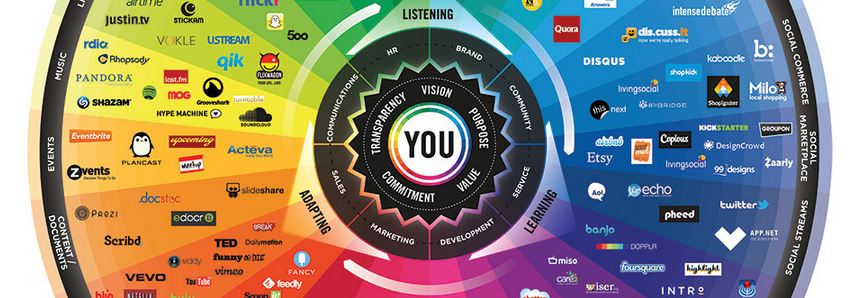A thoughtful and detailed take on the very different world of planning and executing a large modern website. First, a thorough inventory of planned content, second a content planning matrix where the site architect learns to "match content with your website's users, their needs, and your purpose", then finally a content production matrix where "you can get into the tactical work of figuring out how that content is going to be produced". Proof that web design is a very different beast than print design, though designers such as Erik Spiekermann would argue that the fundamental constraints of readability and typographic restraint are universal.
Hustle your Smartphone
 If your app-overladen smartphone is fading by midday, this triple-funded Indiegogo project might be worth your attention. Its backers have embedded a phone charger in a trendy handbag (for ladies) or wallet (for those of the male persuasion). So the user charges the bag at home overnight, and by morning it has enough charge to take your exhausted smartphone from 0% to 100% not once but four times before finally giving up the ghost. A clever, well executed idea.
If your app-overladen smartphone is fading by midday, this triple-funded Indiegogo project might be worth your attention. Its backers have embedded a phone charger in a trendy handbag (for ladies) or wallet (for those of the male persuasion). So the user charges the bag at home overnight, and by morning it has enough charge to take your exhausted smartphone from 0% to 100% not once but four times before finally giving up the ghost. A clever, well executed idea.
Map Your Email Connections
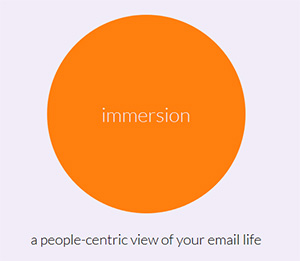 If you and gmail go back a ways, MIT have created a very interesting online tool. Immersion can show you who you communicated with, at what times, who introduced you to whom and how your various contacts are interrelated. Data is displayed as a web of connections, and clicking on the individual nodes/people drills down into their specific statistics. MIT do not scrape your email content, just the from, to, CC and timestamp fields, and that seems to be enough to generate some fascinating information.
If you and gmail go back a ways, MIT have created a very interesting online tool. Immersion can show you who you communicated with, at what times, who introduced you to whom and how your various contacts are interrelated. Data is displayed as a web of connections, and clicking on the individual nodes/people drills down into their specific statistics. MIT do not scrape your email content, just the from, to, CC and timestamp fields, and that seems to be enough to generate some fascinating information.
Thinking About Your Website
Some interesting thoughts about planning for your new or updated website, and from an Australian perspective. Given the tendency of website implementation to stretch out to infinity, a little bit of forethought has the potential to save a lot of money and aggravation.
Text from your Desktop PC
If you spend much of your day in front of a computer, and also reply to innumerable texts on your mobile, Mighty Text provides a workable solution to bringing the two together. Sign up to the free service and "send & receive SMS and MMS from your computer or tablet, using your current Android phone number. Messages stay in sync with your phone's SMS inbox." Imagine typing texts on a full sized keyboard — as they say in the classics, OMG!
Quotes in the Cloud
This interesting service not only helps you to put together an attractive, potentially complex quote, it also enables you run some analytics on the customer response at the other end. How long did they spend reading your introduction, or scanning your folio? Did they look at your pricing page. Proposals can be sent as either html based or PDF.
Flat is the New Black: How Google Designs Itself
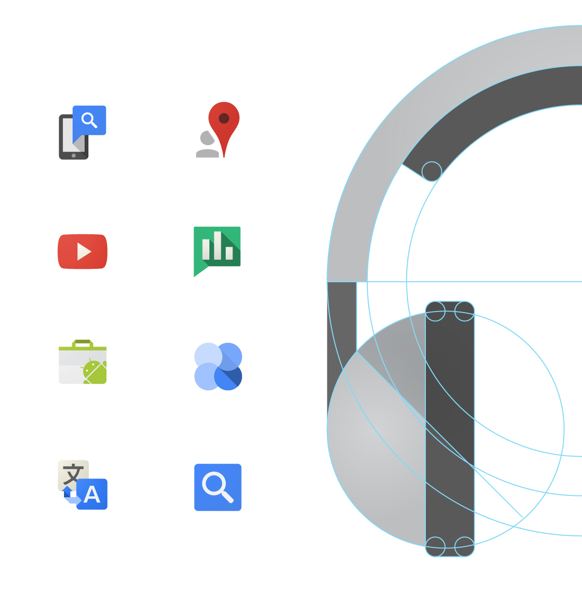
Everything Social, all at Once
If social media makes your head hurt, here's an interesting way to conceptualise/categorise the whole field. Brian Solis has been renewing this impressive diagram each year since 2008. His diagram ranges far beyond Facebook and Twitter, encompassing photo sharing, crowdsourcing, business networking, location based services, social curation, service networks, social fitness and much more. Not only does it show a vast and increasingly influential array of services, it might help developers intent on trailblazing new subdomains within the social sphere.
Cutting Edge Companies
From Fast Company, a compilation of companies intent on 'disrupting' their particular niche. Conspicuously absent from the list are Facebook and Twitter. The Fast Company website is an exemplar of the new trend of sites designed primarily for mobile. One day it will seem odd that an inferior viewing experience (tiny mobile phone screens) is driving the viewing experience for everyone else.
A Thousand Words
![]() Icons Times features cleverly designed icons that attempt to encapsulate a specific news story. It's a fun idea, and interesting for design types, but pretty limited. Every icon requires an explanatory line just to make sure we know what the story is.
Icons Times features cleverly designed icons that attempt to encapsulate a specific news story. It's a fun idea, and interesting for design types, but pretty limited. Every icon requires an explanatory line just to make sure we know what the story is.
Sumopaint a Middleweight Contender
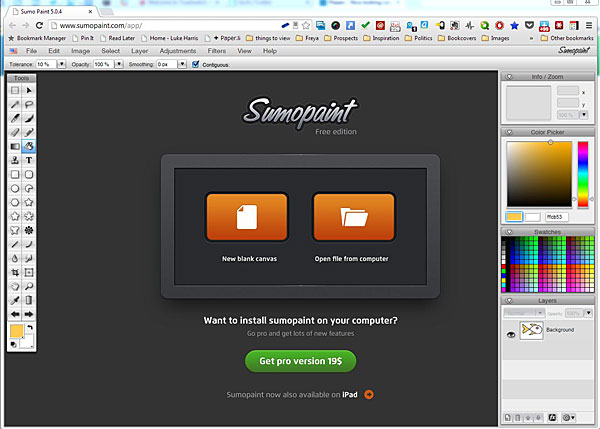 While unlikely to supplant Photoshop, Sumopaint is a surprisingly smooth and powerful image editor. Unlike Photoshop, Sumopaint operates in your browser. Powered by Flash, the program sports many of the same tools as Photoshop. The program also supports layers and filters. The filters are available only if you pay a one-off fee, and for slightly more, users can download an offline app version. The interface is very clean and professional. Now to search for a browser based image editor that runs on html5...
While unlikely to supplant Photoshop, Sumopaint is a surprisingly smooth and powerful image editor. Unlike Photoshop, Sumopaint operates in your browser. Powered by Flash, the program sports many of the same tools as Photoshop. The program also supports layers and filters. The filters are available only if you pay a one-off fee, and for slightly more, users can download an offline app version. The interface is very clean and professional. Now to search for a browser based image editor that runs on html5...
Cloud of Words
 Generate a cloud of your own words online at Wordle. Not sure what any given word cloud reveals (beyond one's tendency to overuse certain terms). Too many polysyllabic words might be a prompt to use plainer language. Or not.
Generate a cloud of your own words online at Wordle. Not sure what any given word cloud reveals (beyond one's tendency to overuse certain terms). Too many polysyllabic words might be a prompt to use plainer language. Or not.
Every Dot a Person
 Cue dropping of jaw. Clever geek takes US census data and renders it to a online map where each dot (341,817,095 in total) is a single person. Keep on zooming in and grey splotches and stipples gradually break down into tiny irreducible dots. The concentrations of said dots/people subtly reveal the presence of roads, mountains, rivers, rainfall patterns, soil types and more. Really amazing, and leaving one wishing for a whole world version.
Cue dropping of jaw. Clever geek takes US census data and renders it to a online map where each dot (341,817,095 in total) is a single person. Keep on zooming in and grey splotches and stipples gradually break down into tiny irreducible dots. The concentrations of said dots/people subtly reveal the presence of roads, mountains, rivers, rainfall patterns, soil types and more. Really amazing, and leaving one wishing for a whole world version.
All the Books in the World
If the resources of your local library just aren't enough, would ten thousand libraries do? WorldCat allows you to conduct meta searches of the "collections and services of more than 10,000 libraries worldwide". This amounts to a total of more than 1.5 billion searchable items. Perfect for finding obscure items in specialist libraries, or conducting in-depth research from remote locations.
Taming the Word > HTML workflow
Quite a bit of web content was originally created in Word for Windows. Word is infamous for creating messy html. To cut time spent on fixing tags, try this free service. Word2cleanhtml "strips out invalid or proprietry tags, leaving clean HTML behind for use in web pages and ebooks". Now to find a similar service for cleaning word docs for use in page layout programs...
Flatland on the Internet
Down with faux fur, ersatz stone, chiselled letters and imitation wood! Designers rise up against illusion and visual misdirection! A designer makes a good case against the current vogue for making interfaces look like physical objects. Pare it back, leaving only the absolutely essential .
"Remove the unnecessary embellishments and keep stripping until you’ve almost gone too far. We believe that elegant interfaces are ones that have the most impact with the fewest elements."
Manipulating PDFs online
The full version of Adobe Acrobat is fairly expensive. Most desktop PC users have the free Acrobat Reader installed, but Reader offers few tools to manipulate PDF files. Sejda (currently in beta) is working to bring a fairly full feature set of browser based tools for PDF editing. Features currently offered include encryption, merging, splitting, rotating and combining. Future tools will include cropping, page transitions, text extraction and more. Potentially a very useful and public-spirited tool.
What the Web is Made Of
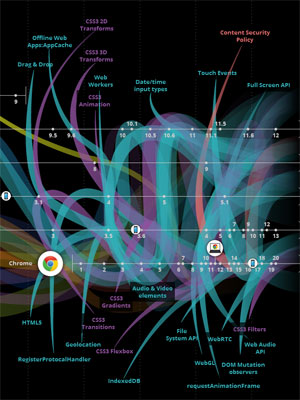 Even casual users of the Internet will have noticed its constant evolution. Sites are vastly more sophisticated, attractive and responsive than they once were. Usability has evolved into a fine art and ecommerce has finally come of age. If you are interested in the underlying machinery that makes the modern Web hum, this website will be of interest. Displayed as a timeline, the site charts the arrival and growth of various protocols, security initiatives, programming languages and browsers. The early days of the Web are revealed in all their primitive glory and the sophistication of the current moment (with much more to come).
Even casual users of the Internet will have noticed its constant evolution. Sites are vastly more sophisticated, attractive and responsive than they once were. Usability has evolved into a fine art and ecommerce has finally come of age. If you are interested in the underlying machinery that makes the modern Web hum, this website will be of interest. Displayed as a timeline, the site charts the arrival and growth of various protocols, security initiatives, programming languages and browsers. The early days of the Web are revealed in all their primitive glory and the sophistication of the current moment (with much more to come).
Principles for User-Friendly Web Services
A creditable attempt by the UK government to enshrine a list of simple principles for constructing user-friendly web-based services. The ten items listed are:
The website then goes on to enlarge on each point, giving concrete examples. The site authors promise to continually refine the list of principles.
There Was Life Before Google?
This fascinating project maps the correspondence-based connections between the key thinkers in the enlightenment 'project', whereby 18th century intellectuals helped realign the church and state, gave science tremendous impetus and create the modern world. The graphics on this site effectively illustrate the flow of ideas and influence and gives us some perspective on our own massively linked world.

